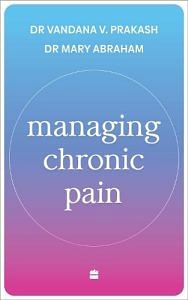Cognitive (thinking) processes can often be extreme or catastrophic in patients with chronic pain. Catastrophic thinking is an irrational or distorted thinking process where the person ruminates about the worst-case scenario. In chronic pain, catastrophic thinking is seen in the beliefs the person has about the (a) cause and meaning of the symptoms, (b) anticipation of which symptom would cause what type and intensity of pain, (c) how much further damage is likely to happen to the body and (d) how the person would cope with the pain.
Coping mechanism would depend on the degree of self-efficacy the person possesses. Thus, cognitions or thought processes have an effect not only on the physical and psychological functioning of the patient but could determine the compliance and outcome of the treatment process.
Some common cognition that one sees with chronic pain patients are as follows:
- Pain means that some damage has occurred to the body.
- Constant pain will lead to disability.
- Physical activity is harmful for my body so I should reduce them.
- Pain is permanent and very unlikely to decrease.
- There is no cure for chronic pain and one has to endure it lifelong.
- Movement worsens pain. • Chronic pain is the result of my past deeds/sins.
- Chronic pain is a form of punishment.
And many such catastrophic and negative thoughts. We saw in Mrs Soma’s case that her depression was related to such catastrophizing thoughts. She had come to believe that any kind of physical activity or exercise would only increase her pain and so she continued taking bed rest. She even expressed anger at her family, saying she felt they already knew from doctors that she would never recover and were not revealing the reality of the situation to her. The negative thoughts related to pain had increased when the physiotherapist made her do some warm-up exercises and her pain increased. Since she had not exercised for more than a year, even minor movements were difficult for her to do.
Also read: ‘Bread, work, liberty’—when Chilean women sewed quilts with messages to oppose Gen Pinochet
During the course of bed rest and inactivity, her muscles had become very weak and it required monumental efforts to persuade her to restart her physical therapy as she could barely stand or walk. It was evident right from the beginning that to help her one had to first work with her mind and then her body. Acceptance and Commitment Model Acceptance and commitment model23,24 integrates covert conditioning, where imagination behaviour therapy methods are used—the latter being primarily mindfulness and cognitive behaviour therapy.
This model emphasizes the cognitive misinterpretations of pain and considers psychological inflexibility or rigid thought processes to be the cause behind the inability to lead a fairly normal life and engage in long-term beneficial goals.The intention of Acceptance and Commitment Therapy (ACT) is not to remove the distressful feelings, but rather to accept what has been given to us in this lifetime and to move towards valued goals. ACT helps the person to face the unpleasant feelings instead of negating them; it insists that such situations should not be avoided and teaches not to overreact to unpleasantness.
Once the person learns to confront rather than avoid painful situations, it leads to some kind of ‘workability’ towards living a meaningful and valued life. The ACT model believes that suffering is caused when the person has direct experience of control of behaviour through the interaction between distorted thoughts and emotions. In other words, pain hurts but the struggle with pain is what causes suffering.
Thus, the ACT model suggests a reverse strategy to manage pain. Its basic premise is that pain may be unpleasant, but while trying to manage it, one’s living of life cannot be deferred. Many a time, controlling the pain by the patient maybe harmful, both physically and emotionally, because a rigid mindset prevents alternative thinking and promotes pain ruminations. This viewpoint is diametrically opposite to other models’ explanation of chronic pain. Most models have concentrated upon distorted thoughts, alleviation of distress and suffering by enhancing mood states.
The ACT model, on the other hand, focuses on acceptance of pain and the commitment to carry on living a meaningful life. The premise of this model is that instead of wasting time and efforts in trying to find a cure for pain or ways of controlling it, the focus should be on living life pursuing one’s valued and cherished goals.
To do so, psychological inflexibility needs to be reduced. The transition from psychological inflexibility to flexibility requires travelling a mental and emotional journey that involves certain adjustments in one’s cognitions, emotions and behaviour. Hence, psychological flexibility persuades the sufferer to stop trying to control pain and learn to face the unpleasant experience of pain as a part of life.
The patient is not encouraged to change the thoughts or emotions about the pain, but is rather helped to confront the unpleasant thoughts, emotions, experiences, memories and sensations from the standpoint of acceptance and as a reality of life. The basic idea is not to negate the unpleasantness but to face and accept it. Psychological flexibility allows the person to commit to a behaviour that has a valued end. This helps in minimizing and then preventing the ruminations of pain thoughts that had, hitherto, been intimidating and restricting meaningful activities.
Psychological flexibility is maintained by the six concepts of ACT: a) acceptance, b) cognitive defusion, c) being present, d) self 64 Managing Chronic Pain as context, e) values and f) committed action.
 This excerpt from ‘Managing Chronic Pain’ by Dr Vandana V. Prakash and Dr Mary Abraham has been taken with permission from HarperCollins India.
This excerpt from ‘Managing Chronic Pain’ by Dr Vandana V. Prakash and Dr Mary Abraham has been taken with permission from HarperCollins India.



